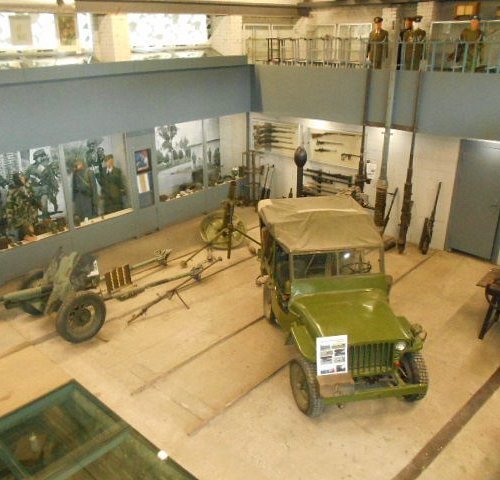Top 10 Sights & Landmarks in Jogeva, Jogeva County
Jõgeva (German: Laisholm) is a small town in Estonia with a population of around 6000 people. It is the administrative centre of Jõgeva County.
1. Rajakula Old Believers' Worship House
Overall Ratings
5.0 based on 1 reviews
It is believed that the Raja congregation of Old Believers was established in the first quarter of the 18th century. The congregation was given permission to build its own church only in 1879. The church was destroyed during the Second World War – the only thing left is the belfry. The present worship house has 11 rooms. In 1854–1930 Gavriil Frolov lived in the worship house. He taught children icon-writing, reading and writing in Old-Slavic, also singing based on old musical notation.
2. Kuremaa Mill
Overall Ratings
4.5 based on 5 reviews
The fully renovated Kuremaa mill reopened in 2009. The first floor is home to a party room with its own fireplace and a sales counter, while the second floor is the perfect place for exhibitions and training events. The third floor hosts a display on the Dutch-style windmills that can be found in Estonia - including its most impressive piece, a model of the Kuremaa windmill. On the top floor you can admire the views over Vooremaa from the narrow windows.
3. Kassinurme Fort and Sacred Grove
Overall Ratings
4.5 based on 2 reviews
The Kassinurme ancient area was established 7000 years ago and the fort 2000 years ago. The sacred grove was discovered when the settlement was established and it is one of the oldest sacred places in Estonia. A fragment of the ancient fort has been restored. At present the sacred grove is the favourite place for history enthusiasts who organise ancient war games there, revive old folk customs and celebrate folk calendar holidays. The health trail lets visitors see the varied nature of the region and enjoy beautiful surface forms.
4. Jogewa Museum
5. Kukita Old Believers Prayer House of the Estonian Association of Old Believers Congregations
Overall Ratings
4.0 based on 1 reviews
The first prayer house of Old Believers in Estonia is located in Kukita. The Kukita Prayer House was consecrated on September 14, 1740. During the war of 1812, the Cossack Old Believers donated a chandelier to the Prayer House. There were a total of 397 Old Believers in the list of parishioners of the Kukita congregation by 1833. The current Prayer House was built in 1948 in place of the one destroyed in World War II.Old Believers have services every Sunday and on all holidays (Christmas, Pascha and Epiphany).
6. Kuremaa Castle and Park
Overall Ratings
4.0 based on 3 reviews
Kuremaa Classicist manor house was built in 1837-1843 by the von Oettingen family. The manor house was designed by the architect E. J. T. Strauss from Tartu. There is also a room for a museum in the castle which gives an overview of the region and of the history of Kuremaa Agricultural School. At present the rooms of the castle are used for organising conferences. The park rich in species descends towards lake Kuremaa which attracts visitors with its well-kept beach and possibilities for taking a rest.
7. Laiuse Fortress Ruins
Overall Ratings
3.5 based on 4 reviews
Construction of the Laiuse fortress was launched by the Livonian Order in the late 14th century to defend its eastern borders. The first defensive structure in Estonia to be fitted with firearms, it gained its definitive appearance in the late Middle Ages. Cannon towers were added to the fortress in the mid-15th century. The fortress crumbled in 1559 but was restored, with wooden barracks built at the end of the Swedish era, which accommodated Karl XII and his entourage from 1700–1701. After the Great Northern War the fortress lay in ruins. Did you know...? - The fortress ruins are today the site of historical snow battles in winter and more peaceful events in summer.
8. Monument and Memorial Park to Betti Alver
Overall Ratings
3.0 based on 1 reviews
The park and monument dedicated to Betti Alver were opened with a ceremony on the writer's 90th birthday in 1996. This is not a traditional bust of a writer, but a symbol focussed on creation. The poet's autograph, signature in stone, is in the base of the monument. The monument as a whole depicts the airy lightness, classic strictness and energetic striving of the poet's works, but also shows contrasts, suppressing and destructive forces. The general image of the monument represents Betti Alver's fate and story.
9. Aidu Altar of Victory
The Aidu Altar of Victory is a memorial to the War of Independence.One of the most important battles of the War of Independence was held near the Aidu village in 1919. A memorial was opened on June 23, 1929, which was reopened 60 years later. This also marks the spot how far a soldier of the Red Army managed to invade.
10. Pajusi Manor
Pajusi manor was constructed in the 17th century. In the 18th and 19th centuries it belonged to the von Fock and the von Wahl families. Its long, stone main building in Classicist style is thought to have been erected in the early 19th century. It was one-storey; only the central section was adorned with a small upper floor, which bears a distinct decorative window. In addition to the main building, the manor as a whole includes a number of other buildings and a large park.Did you know...?*Remaining of the main building of the manor are its central part and right-hand wing, which is home to Pajusi Community Centre








